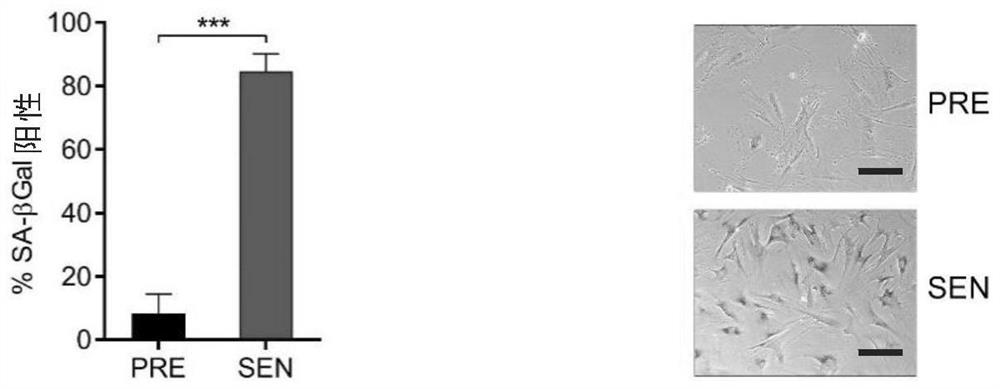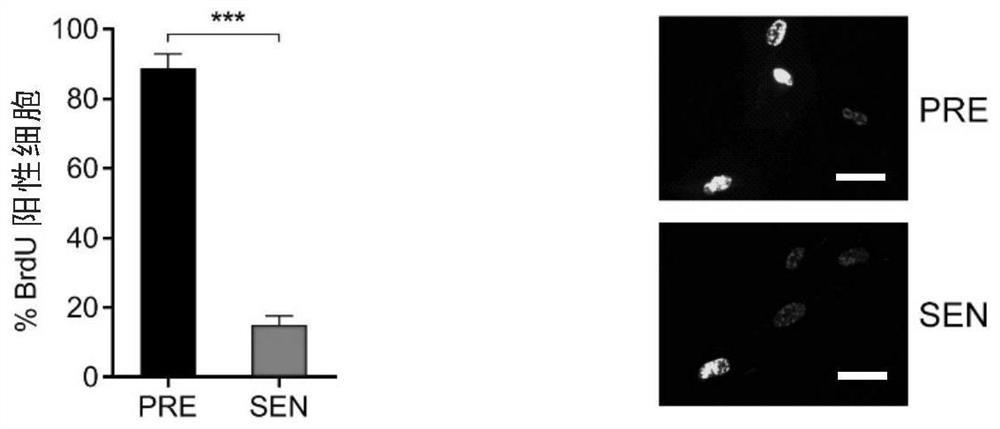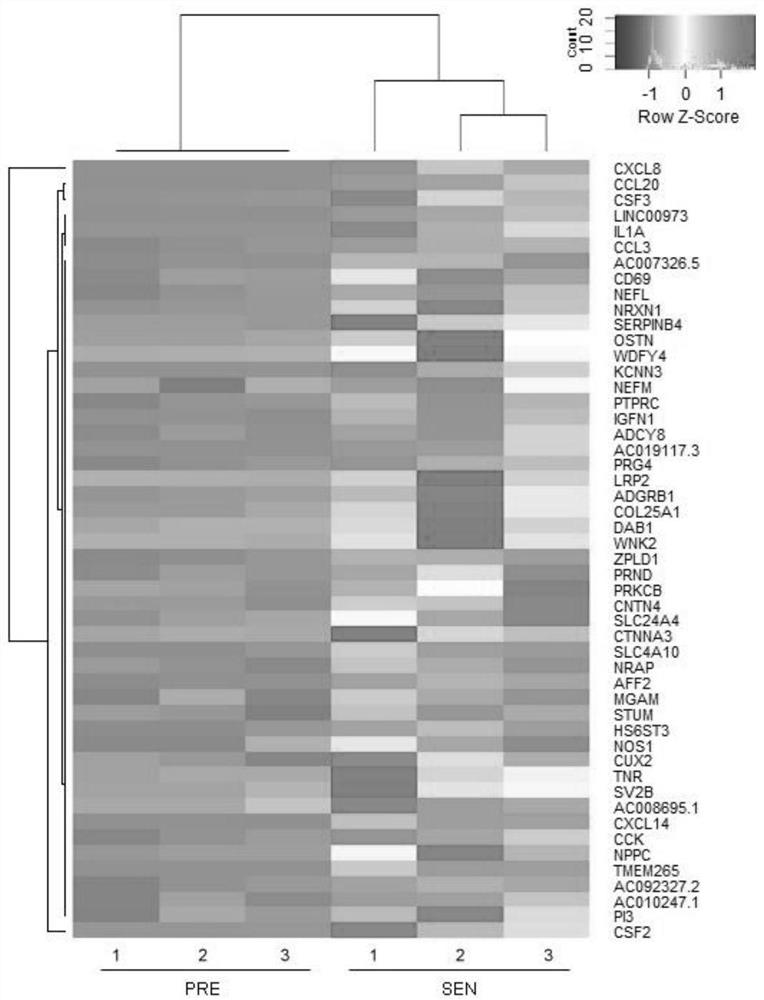Novel exosome release related target and application thereof to monitoring and inhibiting of tumors
An exosome and tumor technology, applied in the field of biomedicine, can solve the problems of accelerating the progress of aging-related diseases such as tumors, and changing the structure and function of the surrounding microenvironment.
- Summary
- Abstract
- Description
- Claims
- Application Information
AI Technical Summary
Problems solved by technology
Method used
Image
Examples
Embodiment 1
[0167] Example 1. Aging cells can release a large number of exosomes and exhibit abnormal particle size distribution and other characteristics
[0168] Previous reports on exosomes in cancer research mostly focused on the study of cancer cells themselves or proliferating cells. In contrast, changes in senescent cells in patient stromal tissues have been rarely reported. At present, the inventors have noticed that the human prostate stromal cell line PSC27 (mainly composed of fibroblasts) will rapidly enter a senescent state after being treated with cytotoxic, especially genotoxic chemotherapy drug bleomycin (BLEO) ( Figure 1 ~ Figure 2 ). At the same time, the cells present a typical senescence-associated secretory phenotype (SASP), which is concentrated in the highly up-regulated expression of a large number of exocrine factors ( image 3 ).
[0169] Interestingly, with the development of cell senescence and SASP, the number of extracellular vesicles (extracellular vesicl...
Embodiment 2
[0172] Example 2, Senescent cell exosomes carry small RNA molecules whose components are very different from those of proliferating cells
[0173] In the in vivo environment, extracellular vesicles can transport a variety of biologically active substances, including various types of small RNA molecules, especially microRNAs (miRNAs), which can reflect the pathophysiological characteristics of mother cells and participate in life such as intercellular communication. During the event. To this end, the inventors first performed deep sequencing analysis of microRNAs molecules in stromal cell-derived exosomes by small RNA sequencing (small RNA sequencing, sRNA-Seq). High-throughput data show that the total amount of small RNAs does not show a large difference between proliferating cells and senescent cells, but there are certain changes in specific small RNA subtypes, such as rRNA, tRNA and human gene intron regions Transcripts generated at some points of segment encoding ( Figu...
Embodiment 3
[0176] Example 3. Downregulation of SIRT1 leads to more active biosynthesis of exosomes in senescent cells and a large amount of exosomes released into the extracellular space
[0177] The inventor then thought about a key question: what is the biological basis that causes the significant changes in the molecular components? In recent years, it has been reported that the abnormality of lysosome or autophagy activity can lead to the disorder of exosome biosynthesis process, which is mainly caused by the change of multivesicular bodies (multivesicular bodies, MVBs). main source of body. In particular, the downregulation of SIRT1 expression in some cancer cells can seriously affect the maintenance of lysosomal acidity, and eventually promote the excessive or abnormal release of exosomes.
[0178] In view of this, the present inventors next analyzed SIRT1, a NAD + Dependent sirtuin expression in proliferating and senescent cells. Whole-transcriptome sequencing (RNA-Seq) results...
PUM
 Login to View More
Login to View More Abstract
Description
Claims
Application Information
 Login to View More
Login to View More - R&D
- Intellectual Property
- Life Sciences
- Materials
- Tech Scout
- Unparalleled Data Quality
- Higher Quality Content
- 60% Fewer Hallucinations
Browse by: Latest US Patents, China's latest patents, Technical Efficacy Thesaurus, Application Domain, Technology Topic, Popular Technical Reports.
© 2025 PatSnap. All rights reserved.Legal|Privacy policy|Modern Slavery Act Transparency Statement|Sitemap|About US| Contact US: help@patsnap.com



